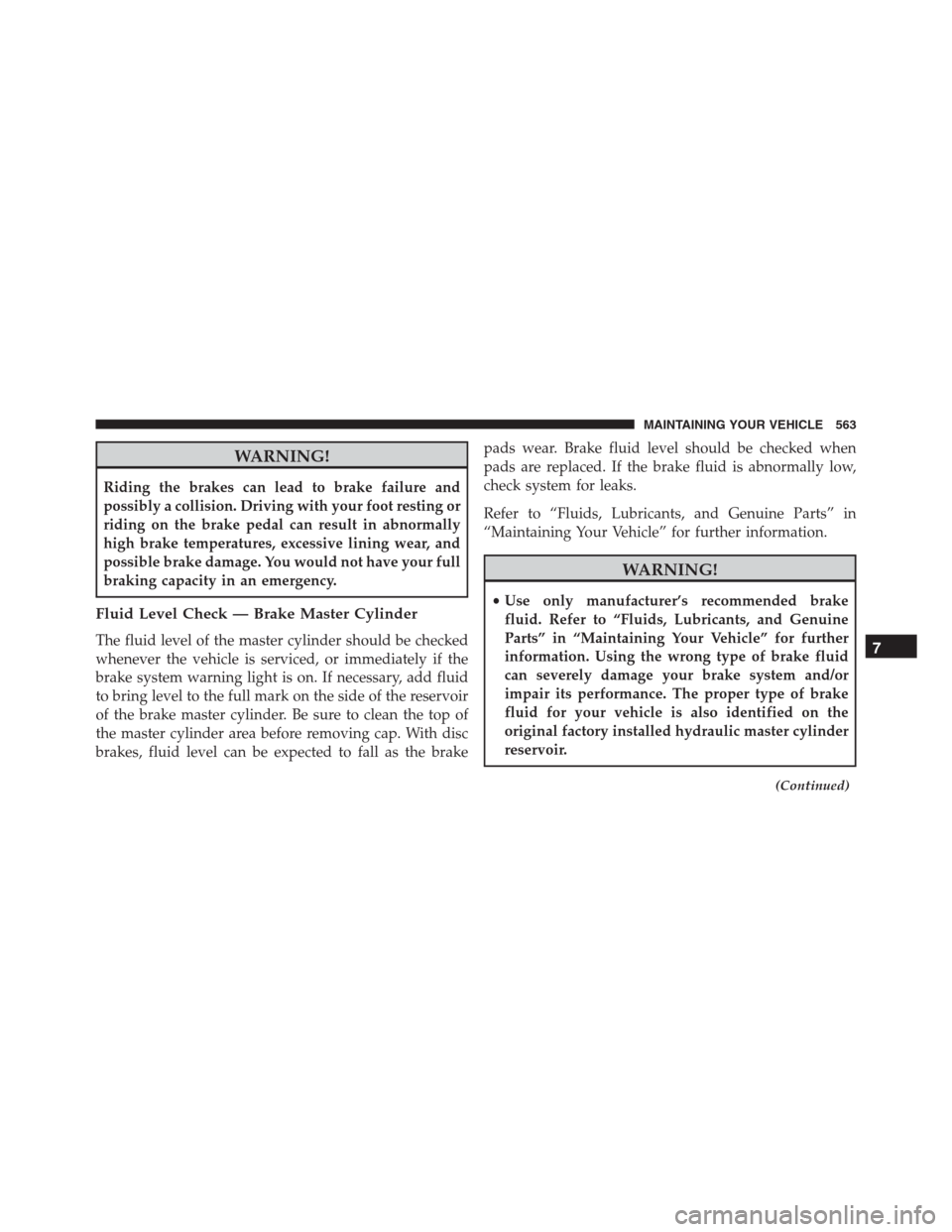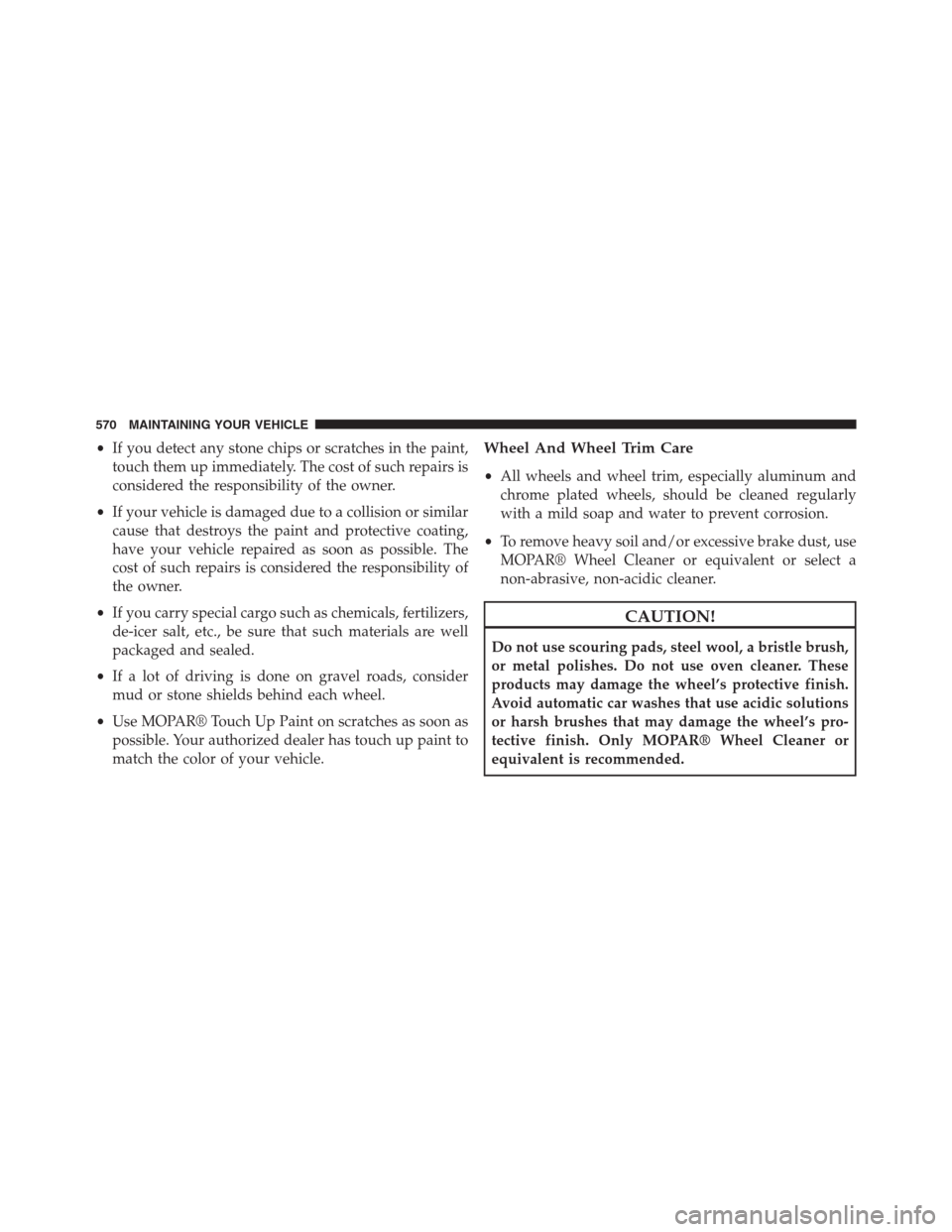Page 397 of 636
STARTING AND OPERATING
CONTENTS
�STARTING PROCEDURES................399
▫Automatic Transmission................399
▫Keyless Enter-N-Go™..................400
▫Normal Starting.......................400
▫Extreme Cold Weather
(Below –20°F Or �29°C)................402
▫If Engine Fails To Start.................402
▫After Starting........................403
�AUTOMATIC TRANSMISSION............403
▫Key Ignition Park Interlock...............405▫Brake/Transmission Shift Interlock System . . .405
▫Fuel Economy (ECO) Mode..............405
▫Eight–Speed Automatic Transmission.......407
�PADDLE SHIFT MODE..................414
▫Operation...........................415
�SELEC-TRACK® — IF EQUIPPED...........416
▫Description..........................416
▫Active Damping System.................418
▫Launch Mode — If Equipped.............419
�DRIVING THROUGH WATER.............420
5
Page 420 of 636

traction with seamless steering feel to provide im-
proved handling and acceleration over two-wheel
drive vehicles. The active suspension system will be in
Touring Mode.
•Track– Track road calibration for use on high traction
surfaces. Driveline is maximized for traction. Some
binding may be felt on less forgiving surfaces. The
electronic brake controls are set to Partial OFF to limit
traction control management of throttle and wheel
spin.
•The transmission will be in SPORT shift mode and
provide a more aggressive shifting pattern. Refer to
“Paddle Shift Mode” in “Starting And Operating”
for further information.
•The customer has the option of going to FULL OFF
with no interaction from the ESC System. The active
suspension system will be in Full Firm mode.
•This feature will reset to AUTO on an ignition cycle.•To w– Use this mode for towing. Vehicle suspension
will go to Firm mode. Trailer sway control is enabled
in the ESC system. The terrain switch will remain in
this position through an ignition cycle until the cus-
tomer cycles into another position. This feature will
reset to AUTO upon an ignition cycle.
Active Damping System
This vehicle is equipped with an electronic controlled
damping system. This system reduces body roll and pitch
in many driving situations including cornering, accelera-
tion and braking. There are 3 modes:
•Touring Mode(Available in terrain positions AUTO
and SNOW) — Used during highway speeds where a
touring suspension feel is desired.
•Firm Mode(Available in terrain positions SPORT and
TOW) — Provides a firm suspension for better han-
dling.
418 STARTING AND OPERATING
Page 497 of 636

•Trailer brakes are recommended for trailers over
1,000 lbs (454 kg) and required for trailers in excess of
1,653 lbs (750 kg).
Towing Requirements — Tires
•Proper tire inflation pressures are essential to the safe
and satisfactory operation of your vehicle. Refer to
“Tires – General Information” in “Starting And Oper-
ating” for proper tire inflation procedures.
•Check the trailer tires for proper tire inflation pres-
sures before trailer usage.
•Check for signs of tire wear or visible tire damage
before towing a trailer. Refer to “Tires – General
Information” in “Starting And Operating” for proper
inspection procedure.
•When replacing tires, refer to “Tires – General Infor-
mation” in “Starting And Operating” for proper tirereplacement procedures. Replacing tires with a higher
load carrying capacity will not increase the vehicle’s
GVWR and GAWR limits.
Towing Tips
NOTE:To provide optimum towing performance and to
protect transmission components always select TOW
mode when towing a trailer. Before setting out on a trip,
practice turning, stopping and backing the trailer in an
area away from heavy traffic.
Automatic Transmission
The DRIVE range can be selected when towing. The
transmission controls include a drive strategy to avoid
frequent shifting when towing. However, if frequent
shifting does occur while in DRIVE, select TOW mode, or
use the Paddle Shift switches to manually select a lower
gear.
5
STARTING AND OPERATING 495
Page 565 of 636

WARNING!
Riding the brakes can lead to brake failure and
possibly a collision. Driving with your foot resting or
riding on the brake pedal can result in abnormally
high brake temperatures, excessive lining wear, and
possible brake damage. You would not have your full
braking capacity in an emergency.
Fluid Level Check — Brake Master Cylinder
The fluid level of the master cylinder should be checked
whenever the vehicle is serviced, or immediately if the
brake system warning light is on. If necessary, add fluid
to bring level to the full mark on the side of the reservoir
of the brake master cylinder. Be sure to clean the top of
the master cylinder area before removing cap. With disc
brakes, fluid level can be expected to fall as the brakepads wear. Brake fluid level should be checked when
pads are replaced. If the brake fluid is abnormally low,
check system for leaks.
Refer to “Fluids, Lubricants, and Genuine Parts” in
“Maintaining Your Vehicle” for further information.
WARNING!
•Use only manufacturer’s recommended brake
fluid. Refer to “Fluids, Lubricants, and Genuine
Parts” in “Maintaining Your Vehicle” for further
information. Using the wrong type of brake fluid
can severely damage your brake system and/or
impair its performance. The proper type of brake
fluid for your vehicle is also identified on the
original factory installed hydraulic master cylinder
reservoir.
(Continued)
7
MAINTAINING YOUR VEHICLE 563
Page 572 of 636

•If you detect any stone chips or scratches in the paint,
touch them up immediately. The cost of such repairs is
considered the responsibility of the owner.
•If your vehicle is damaged due to a collision or similar
cause that destroys the paint and protective coating,
have your vehicle repaired as soon as possible. The
cost of such repairs is considered the responsibility of
the owner.
•If you carry special cargo such as chemicals, fertilizers,
de-icer salt, etc., be sure that such materials are well
packaged and sealed.
•If a lot of driving is done on gravel roads, consider
mud or stone shields behind each wheel.
•Use MOPAR® Touch Up Paint on scratches as soon as
possible. Your authorized dealer has touch up paint to
match the color of your vehicle.Wheel And Wheel Trim Care
•All wheels and wheel trim, especially aluminum and
chrome plated wheels, should be cleaned regularly
with a mild soap and water to prevent corrosion.
•To remove heavy soil and/or excessive brake dust, use
MOPAR® Wheel Cleaner or equivalent or select a
non-abrasive, non-acidic cleaner.
CAUTION!
Do not use scouring pads, steel wool, a bristle brush,
or metal polishes. Do not use oven cleaner. These
products may damage the wheel’s protective finish.
Avoid automatic car washes that use acidic solutions
or harsh brushes that may damage the wheel’s pro-
tective finish. Only MOPAR® Wheel Cleaner or
equivalent is recommended.
570 MAINTAINING YOUR VEHICLE